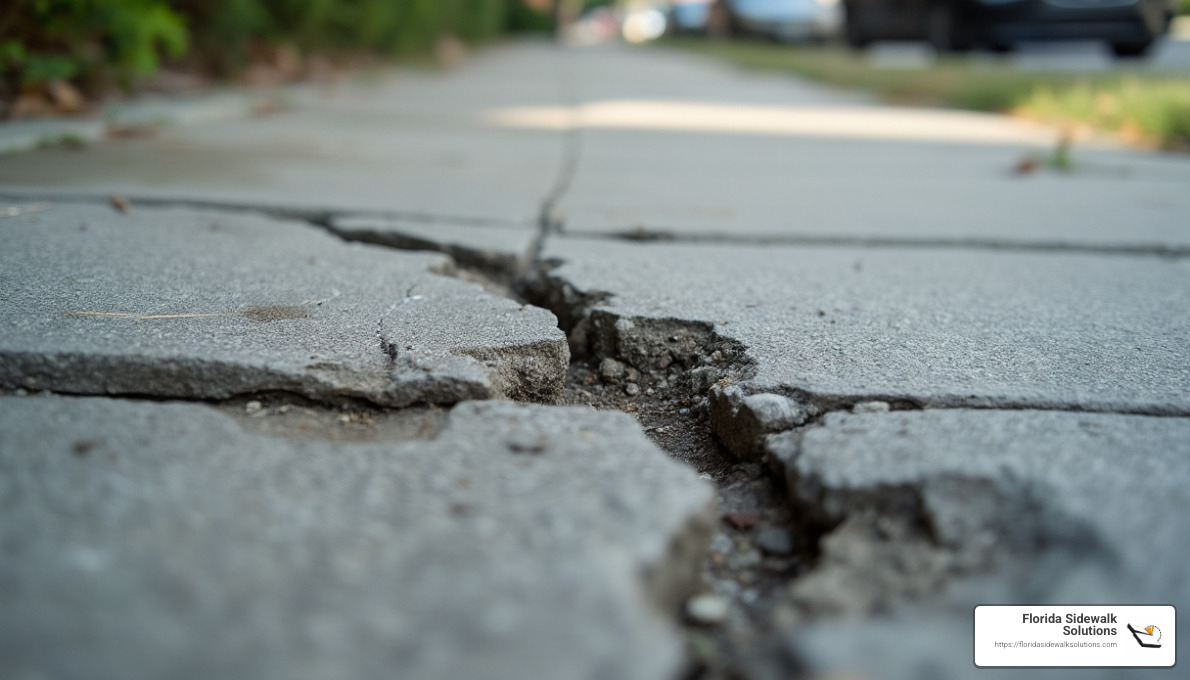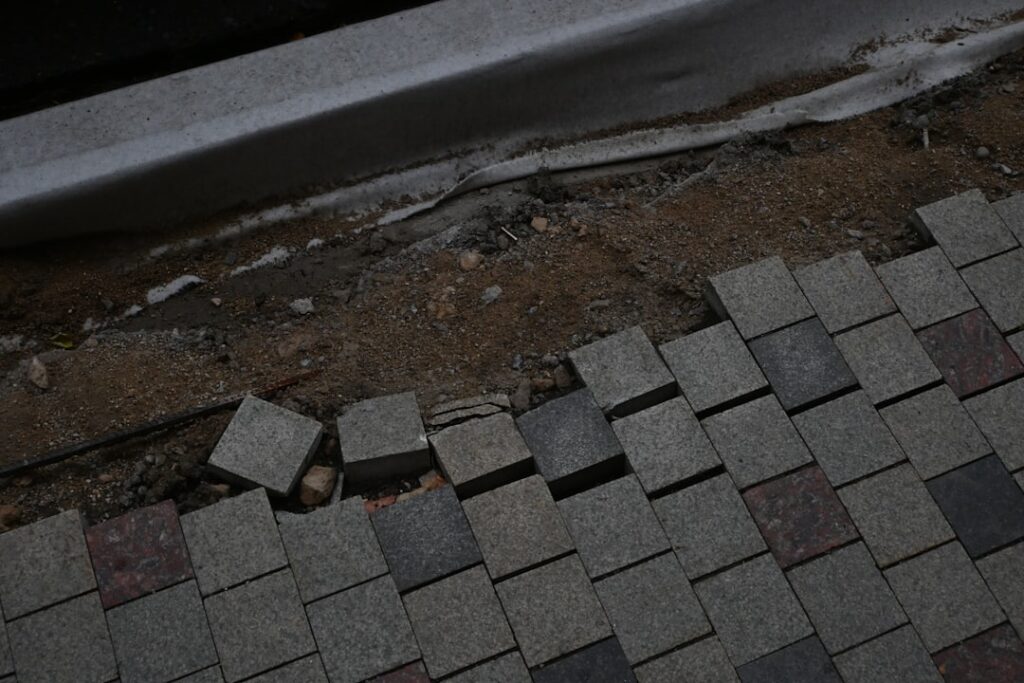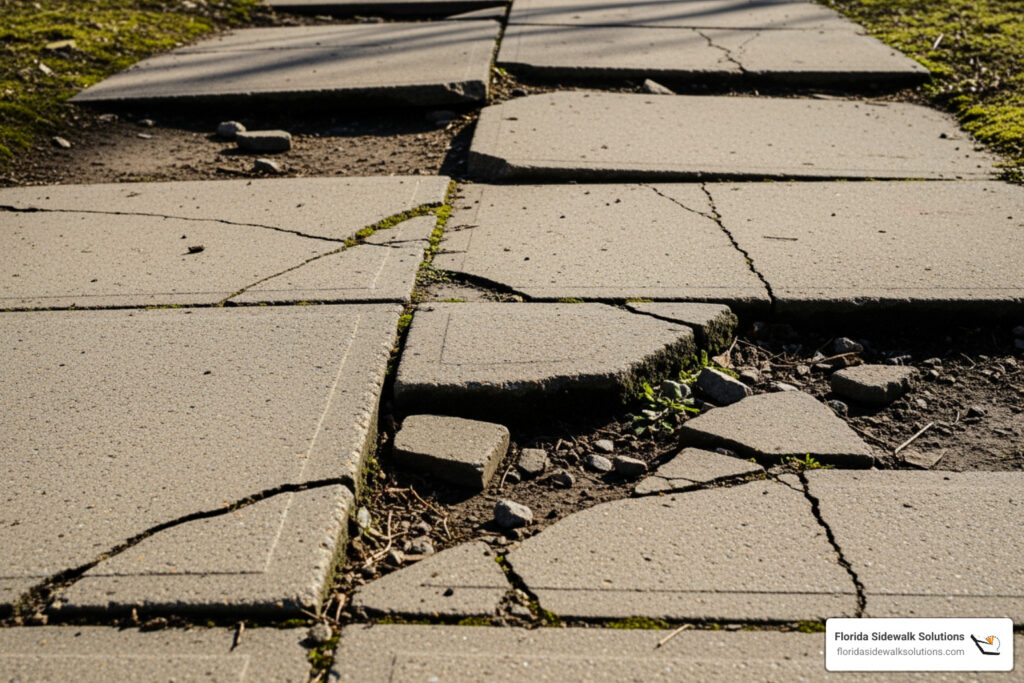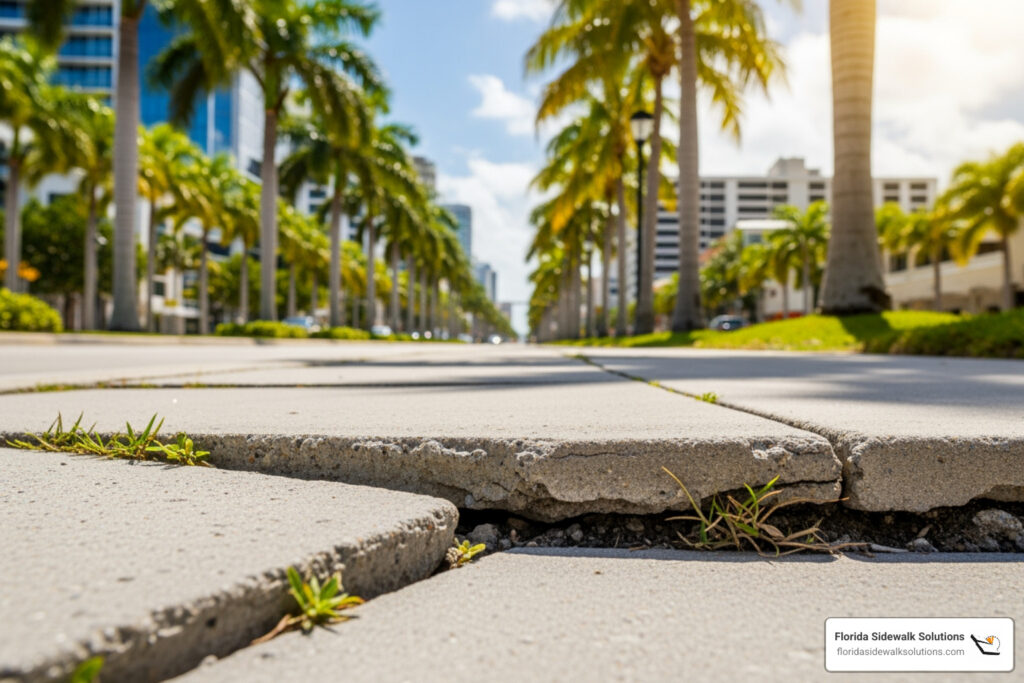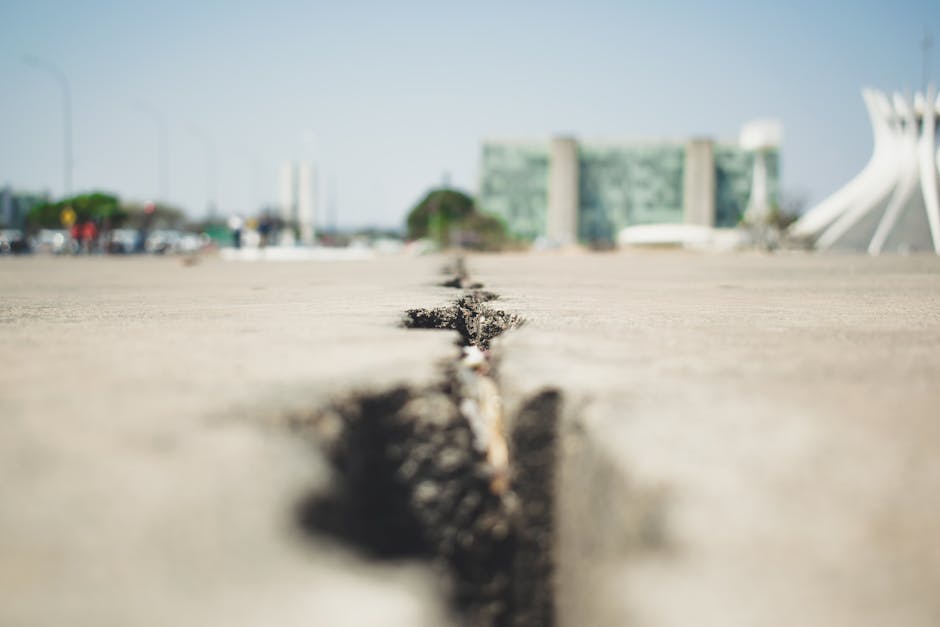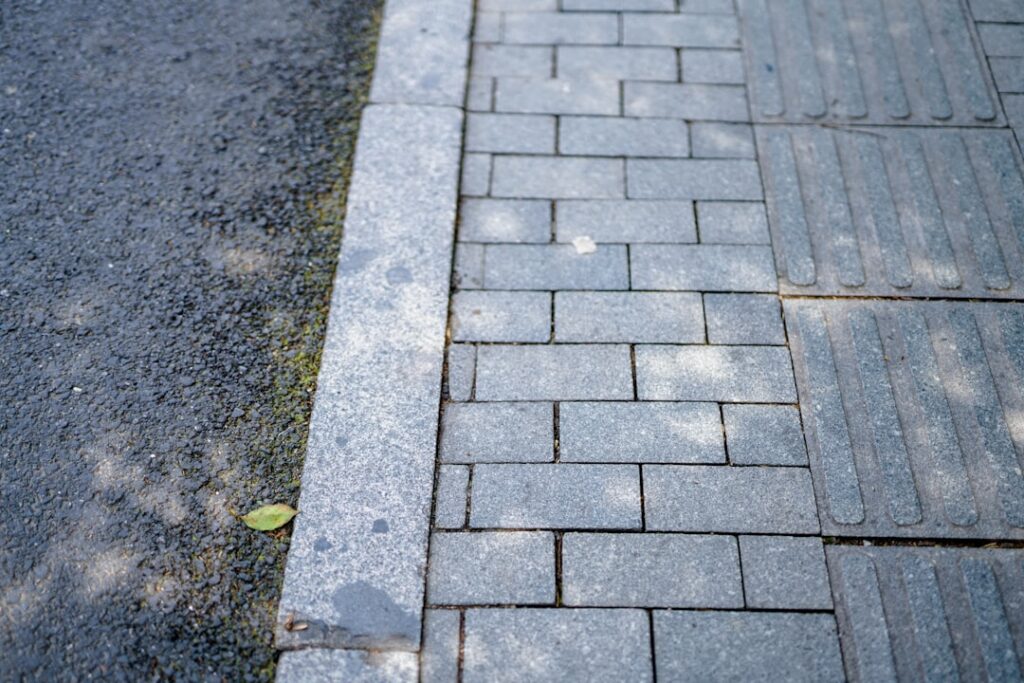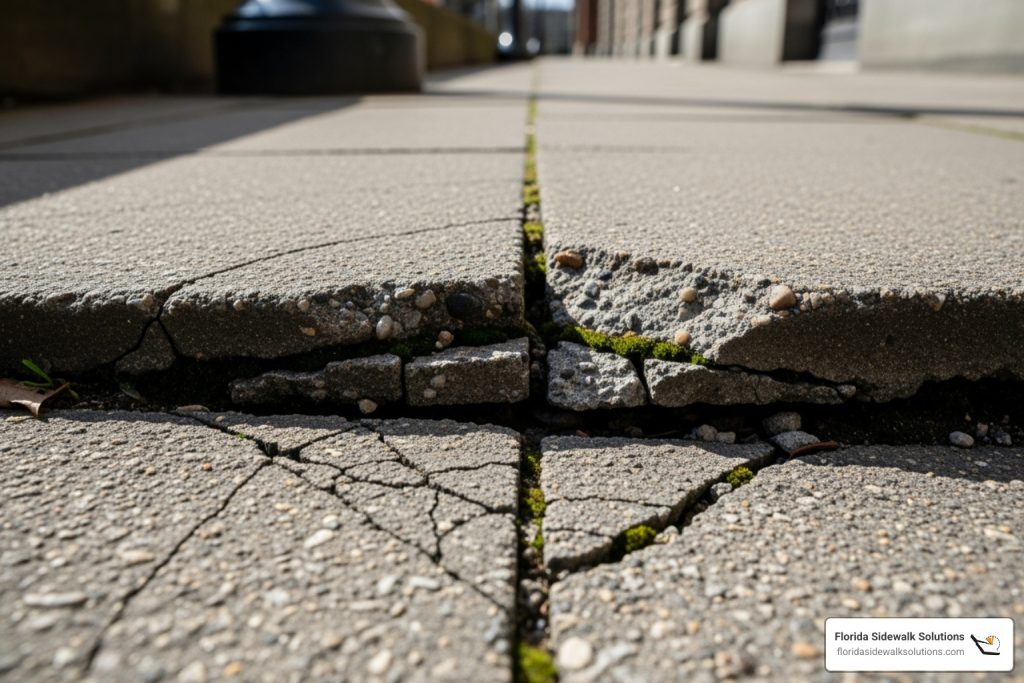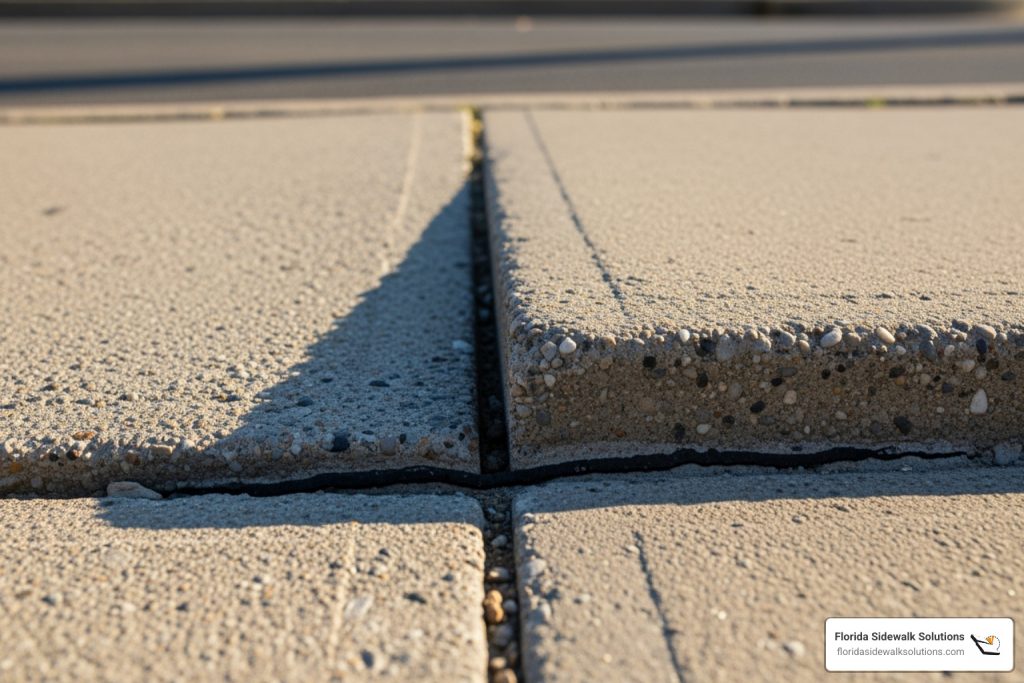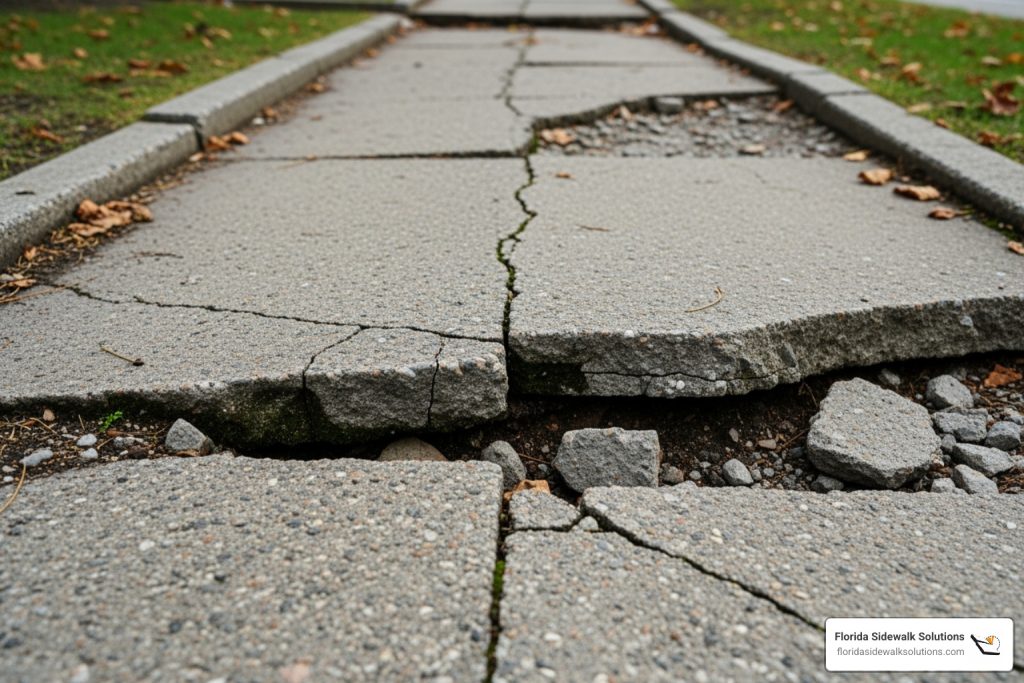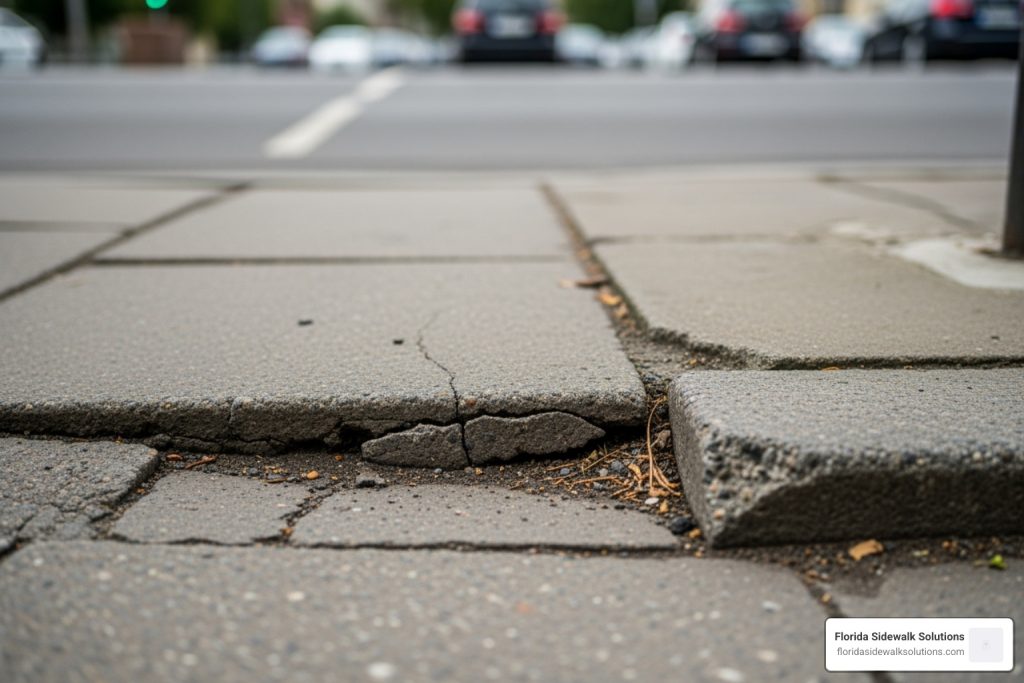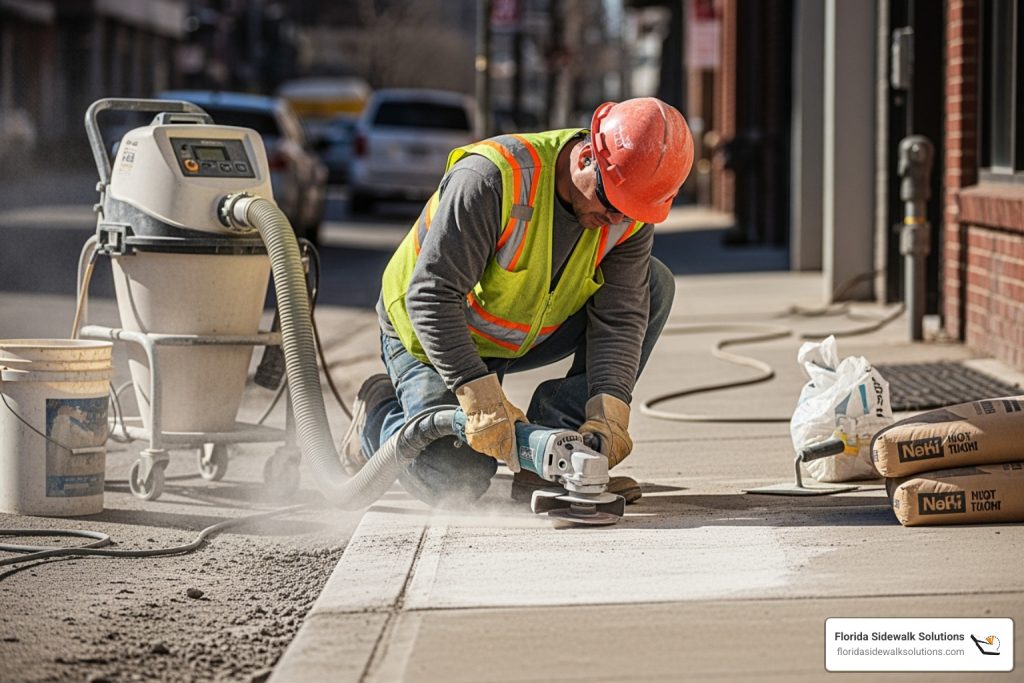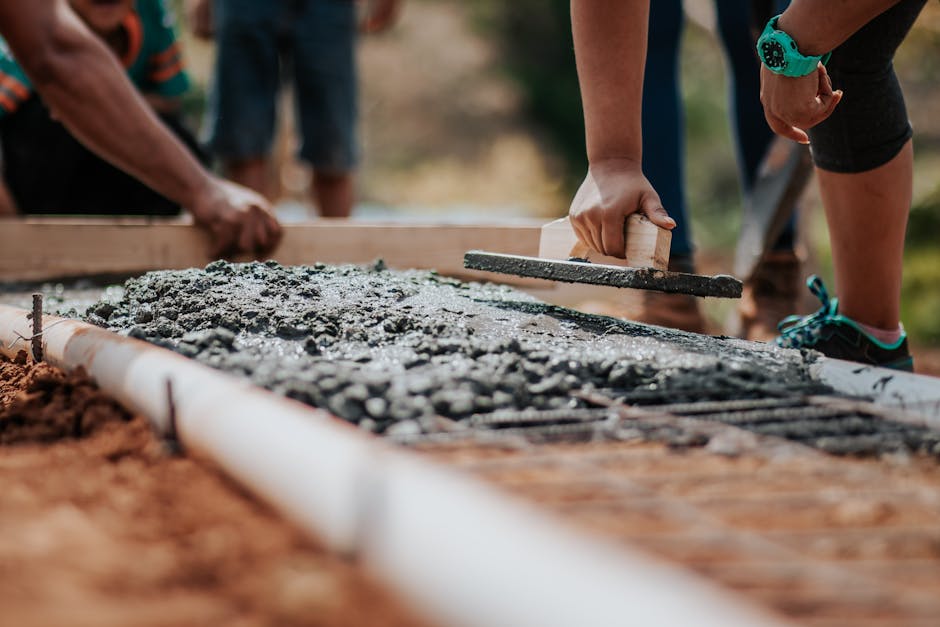Fix sidewalk trip hazards to ensure safe and accessible pedestrian pathways in our urban infrastructure. Whether you’re a municipal maintenance manager tackling budget constraints or simply concerned about public safety, addressing these hazards is crucial. Here’s a quick overview of how to identify and fix these issues:
- Identify the Hazard: Look for uneven surfaces, cracks, or rising tree roots.
- Choose an Appropriate Fix: Temporary solutions include warning signs or fillers, while permanent fixes include concrete lifting or slabjacking.
- Consult Local Regulations: Ensure that any repair is compliant with local ADA standards.
Keeping public pathways safe is a responsibility that requires prompt action. Sidewalks in disrepair don’t just pose a risk for tripping, they can lead to legal issues and degrade the area’s value. By regularly inspecting and maintaining sidewalks, we can prevent accidents and ensure a welcoming space for everyone.

Identifying Sidewalk Trip Hazards
Sidewalks are essential for safe pedestrian travel, but they can become hazardous over time. Identifying these trip hazards is the first step in maintaining safe walkways. Here’s what to look for:
Uneven Surfaces
Uneven surfaces are a common trip hazard. They often occur where sidewalk slabs have shifted due to soil settling or improper installation. Regular inspections can help catch these issues early. Even a small height difference of \(\frac{1}{4}\) inch can be enough to cause a trip, according to the ADA.

Cracks
Cracks in sidewalks can develop for a variety of reasons, including temperature changes and substandard materials. These fissures not only create tripping risks but can also worsen over time if water seeps in and freezes. Sealing cracks promptly with flexible concrete caulk can prevent further damage.
Tree Roots
Tree roots are another common culprit behind sidewalk displacement. As trees grow, their roots can push up slabs, creating dangerous protrusions. Regularly trimming roots and choosing tree species with less aggressive root systems can help mitigate this issue.
Soil Settling
Soil settling is a natural process that can lead to uneven sidewalks. This happens when the ground beneath a sidewalk compacts or shifts, causing the slabs above to sink or tilt. Areas prone to heavy rainfall or poor drainage are especially susceptible. Addressing drainage issues and monitoring soil conditions can help maintain level sidewalks.
Poor Construction
Lastly, poor construction practices can result in weak sidewalks that are prone to trip hazards. This includes using inadequate materials or failing to follow construction guidelines. Regular audits of sidewalk quality are essential to identify and rectify these issues before they become hazardous.
By understanding and identifying these common causes of sidewalk trip hazards, we can take proactive steps to address them. This not only ensures pedestrian safety but also helps maintain the aesthetic and economic value of the surrounding area.
How to Fix Sidewalk Trip Hazards
Fixing sidewalk trip hazards can seem daunting, but with the right approach, it’s manageable. Whether you’re looking for a quick fix or a long-term solution, understanding your options is key.
Temporary Solutions
Temporary solutions are great for immediate safety but are not meant to last forever. They are quick, easy, and cost-effective ways to reduce risks while planning for permanent repairs.
Warning Signs
The simplest way to address a trip hazard immediately is by using warning signs. These signs alert pedestrians to potential dangers, allowing them to steer safely. While not a fix, they are crucial for preventing accidents in the short term.
Temporary Fillers
Another quick fix is using temporary fillers or patches. These materials can level out uneven surfaces, reducing the tripping risk. They are easy to apply and provide a short-term solution while you plan for more durable repairs.
Permanent Fixes
For a lasting solution, consider more permanent methods. These approaches not only eliminate hazards but also strengthen the sidewalk’s overall integrity.
Precision Concrete Cutting
Precision concrete cutting is an effective way to fix sidewalk trip hazards. This process involves removing the raised portion of the concrete to create a smooth, even surface. It’s a precise method that can restore the sidewalk without needing full replacement.
Replacement of Damaged Sections
When sections of the sidewalk are too damaged, replacement is the best option. This involves removing the affected area and pouring new concrete. Although more labor-intensive, it ensures a long-lasting and safe sidewalk.
Professional Interventions
While some fixes can be DIY projects, hiring professionals ensures the job is done right. Experts in sidewalk repair have the tools and experience necessary to address trip hazards effectively. They can assess the situation and recommend the best course of action, whether it’s cutting, replacing, or another method.
By understanding these options, property owners can make informed decisions about how to fix sidewalk trip hazards, ensuring safe and accessible walkways for everyone.
Preventing Future Trip Hazards
Preventing sidewalk trip hazards is not just about fixing existing issues. It’s about proactive measures that keep walkways safe and functional for the long term.
Regular Inspections
Consistent inspections are crucial in identifying potential issues before they become hazards. A simple walk-through to check for cracks, uneven surfaces, or any changes in the sidewalk can make a big difference. Property owners should establish a routine inspection schedule to catch problems early.
Prompt Repairs
Once a potential hazard is identified, acting quickly is essential. Small issues can escalate into major problems if left unaddressed. Prompt repairs not only keep sidewalks safe but also save money by preventing more extensive damage down the line.
Tree Maintenance
Trees are beautiful but can cause sidewalks to shift or crack as roots grow. Regular tree maintenance, including root pruning, can prevent these issues. It’s important to monitor trees near sidewalks and take action if roots begin to interfere with the concrete.
Community Involvement
Involving the community in sidewalk maintenance can lead to safer neighborhoods. Encourage residents to report hazards and participate in community clean-up days. This collective effort not only fosters a sense of responsibility but also ensures a quicker response to potential hazards.
By focusing on these preventative measures, communities can maintain trip-free walkways and improve pedestrian safety. Regular inspections, timely repairs, careful tree management, and community engagement are key strategies for keeping sidewalks safe and compliant.
Frequently Asked Questions about Fixing Sidewalk Trip Hazards
What constitutes a tripping hazard on a sidewalk?
A tripping hazard on a sidewalk can take several forms. Uneven surfaces, such as those caused by soil settling or poor construction, are common culprits. Cracks and fractures, often resulting from weathering or substandard materials, also pose risks. Displaced sections of concrete, which might arise from tree roots pushing up the pavement, are another frequent issue. These hazards make walkways unsafe and need prompt attention.
How do you fix a sunken sidewalk?
Fixing a sunken sidewalk can be efficiently achieved through slabjacking. This method involves injecting a grout mixture beneath the sunken slab, raising it back to its original level. Slabjacking not only addresses the immediate unevenness but also provides a stable and lasting solution. Concrete leveling is another approach, though slabjacking is often preferred for its precision and effectiveness.
How to fix a sidewalk raised by tree roots?
Sidewalks raised by tree roots require a delicate balance between preserving the tree and maintaining a safe walkway. Root pruning is a vital first step. By carefully trimming the roots, you can prevent further damage to the sidewalk. After pruning, specialized repairs like slabjacking can be applied to level the concrete. This approach ensures that the sidewalk remains even while minimizing future disruptions from root growth.
Conclusion
At Florida Sidewalk Solutions, we pride ourselves on delivering ADA-compliant solutions to fix sidewalk trip hazards. Our commitment to safety and accessibility ensures that everyone can steer pedestrian pathways with ease. By adhering to ADA standards, we help property owners avoid potential legal issues and create inclusive spaces for all.
Our superior technology sets us apart in the concrete repair industry. We use patented methods that precisely address trip hazards without compromising the integrity of the surrounding concrete. This approach not only improves safety but also extends the lifespan of sidewalks, making it a smart investment for property owners.
Economically, our solutions offer significant advantages. Traditional methods of sidewalk repair can be costly and time-consuming. However, our innovative techniques are both cost-effective and efficient, reducing waste and conserving resources. This makes us a preferred choice for municipalities and property managers looking to maintain their sidewalks affordably.
For those looking to ensure their walkways are safe and compliant, Florida Sidewalk Solutions is here to help. Our expert team is ready to assess, address, and eliminate trip hazards, providing peace of mind and safer streets for all. Let’s work together to create trip-free walkways and improve the safety and accessibility of our communities.

